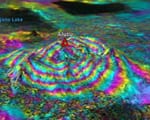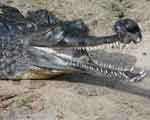New research finds that world-class sprinters attack the ground to maximize impact forces and speed
The world’s fastest sprinters have unique gait features that account for their ability to achieve fast speeds, according to two new studies from Southern Methodist University, Dallas.
The new findings indicate that the secret to elite sprinting speeds lies in the distinct limb dynamics sprinters use to elevate ground forces upon foot-ground impact.
“Our new studies show that these elite sprinters don’t use their legs to just bounce off the ground as most other runners do,” said human biomechanics expert and lead author on the studies Ken Clark, a researcher in the SMU Locomotor Performance Laboratory. “The top sprinters have developed a wind-up and delivery mechanism to augment impact forces. Other runners do not do so.”
The new findings address a major performance question that has remained unanswered for more than a decade.
Previous studies had established that faster runners attain faster speeds by hitting the ground more forcefully than other runners do in relation to their body weight. However, how faster runners are able to do this was fully unknown. That sparked considerable debate and uncertainty about the best strategies for athletes to enhance ground-force application and speed.
“Elite speed athletes have a running pattern that is distinct,” Clark said. “Our data indicate the fastest sprinters each have identified the same solution for maximizing speed, which strongly implies that when you put the physics and the biology together, there’s only one way to sprint really fast.”
The critical and distinctive gait features identified by the study’s authors occur as the lower limb approaches and impacts the ground, said study co-author and running mechanics expert Peter Weyand, director of the SMU Locomotor Performance Lab.
“We found that the fastest athletes all do the same thing to apply the greater forces needed to attain faster speeds,” Weyand said. “They cock the knee high before driving the foot into the ground, while maintaining a stiff ankle. These actions elevate ground forces by stopping the lower leg abruptly upon impact.”
The new research indicates that the fastest runners decelerate their foot and ankle in just over two-hundredths of a second after initial contact with the ground.
The researchers reported their findings with co-author and physicist Laurence J. Ryan, research engineer for the SMU Locomotor Performance Laboratory in the Annette Caldwell Simmons School of Education & Human Development.
The finding that elite sprinters apply greater ground forces with a distinctive impact pattern is reported in the Journal of Applied Physiology in the article, “Are running speeds maximized with simple-spring stance mechanics?” It appears online at http://bit.ly/1Be92Mk in advance of appearing in the print journal.
The finding that faster athletes deliver a firm, rapid punch to the ground upon contact is reported in The Journal of Experimental Biology, in the article “Foot speed, foot-strike and footwear: linking gait mechanics and running ground reaction forces.” It appears online at http://bit.ly/1uskM9v.
Studies compared data from competitive sprinters to other athletes
The tests conducted at SMU’s Locomotor Performance Lab compared competitive sprinters to other fast-running athletes.
The competitive sprinting group included track athletes who specialized in the 100- and 200-meter events. More than half had international experience and had participated in the Olympics and Track and Field World Championships.
They were compared to a group of athletes that included competitive soccer, lacrosse and football players.
All the athletes in both groups had mid- and fore-foot strike patterns. Their running mechanics were tested on a custom, high-speed force treadmill that allowed the researchers to capture and analyze hundreds of footfalls at precisely controlled speeds. Video captured for the studies is posted to the SMU Locomotor Performance Lab Youtube channel. Images on flickr are at http://bit.ly/YKwAtB.
The researchers measured ground-force patterns over a full range of running speeds for each athlete from a jog to top sprinting speed.
“We looked at running speeds ranging from 3 to 11 meters per second,” Clark said. “Earlier studies in the field of biomechanics have examined ground reaction force patterns, but focused primarily on jogging speeds between 3 and 5 meters per second. The differences we found became identifiable largely because of the broad range of speeds we examined and the caliber of the sprinters who participated in the study.”
Classic spring model of running does not explain the unique gait features of top sprinters
The contemporary view of running mechanics has been heavily influenced by the simple spring-mass model, a theory first formulated in the late 1980s. The spring-mass model assumes the legs work essentially like the compression spring of a pogo stick when in contact with the ground.
In this theory, during running at a constant speed on level ground, the body falls down out of the air. Upon landing, the support leg acts like a pogo stick to catch the body and pop it back up in the air for the next step.
It’s been generally assumed that this classic spring model applies to faster running speeds and faster athletes as well as to slower ones.
Elite sprinters do not conform to widely accepted theories of running mechanics
Clark, Ryan and Weyand questioned whether such a passive catch-and-rebound explanation could account for the greater ground forces widely understood as the reason why sprinters achieve faster speeds.
After the researchers gathered ground reaction force waveform data, they found that sprinters differed from other athletes. From there they compared the waveforms to those predicted by the simple spring in the classic model.
“The elite sprinters did not conform to the spring-model predictions,” said Clark. “They deviated a lot, specifically during the first half of the ground-contact phase. Our athlete non-sprinters, on the other hand, conformed fairly closely to the spring-model predictions, even at their top speeds.”
Weyand said the new findings indicate that the classic spring model is not sufficient for understanding the mechanical basis of sprint running performance.
“We found all the fastest athletes applied greater ground forces with a common and apparently characteristic pattern that resulted from the same basic gait features,” he said. “What these sprinters do differently is in their wind up and delivery mechanics. The motion of their limbs in the air is distinct; so even though the duration of their limb-swing phase at top speed does not differ from other runners, the force delivery mechanism differs markedly.”
Sprinters have a common mechanical solution for speed — one that athletes who aren’t as fast do not execute.
“This provides scientific information so coaches and athletes can fully identify what to train,” Clark said. “It is our hope that our results can translate into advances in evidence-based approaches to training speed.”
The research was funded by the U.S. Army Medical Research and Materiel Command and SMU’s Simmons School of Education and Human Development. — Margaret Allen
Follow SMUResearch.com on twitter at @smuresearch.
SMU is a nationally ranked private university in Dallas founded 100 years ago. Today, SMU enrolls nearly 11,000 students who benefit from the academic opportunities and international reach of seven degree-granting schools. For more information see www.smu.edu.
SMU has an uplink facility located on campus for live TV, radio, or online interviews. To speak with an SMU expert or book an SMU guest in the studio, call SMU News & Communications at 214-768-7650.
 Department of Defense awards $2.6 million to SMU STEM program for minority students
Department of Defense awards $2.6 million to SMU STEM program for minority students Low IQ students learn to read at 1st-grade level after persistent, intensive instruction
Low IQ students learn to read at 1st-grade level after persistent, intensive instruction Richest marine reptile fossil bed along Africa’s South Atlantic coast is dated at 71.5 mya
Richest marine reptile fossil bed along Africa’s South Atlantic coast is dated at 71.5 mya Satellite view of volcanoes finds the link between ground deformation and eruption
Satellite view of volcanoes finds the link between ground deformation and eruption Comet theory false; doesn’t explain cold snap at the end of the Ice Age, Clovis changes or mass animal extinction
Comet theory false; doesn’t explain cold snap at the end of the Ice Age, Clovis changes or mass animal extinction
 Public health insurance provides insured infants better, less costly care than private plans
Public health insurance provides insured infants better, less costly care than private plans A mathematical model determines which nations are more stable and which are more likely to break up
A mathematical model determines which nations are more stable and which are more likely to break up Indian, Vietnamese immigrants become American over time through civic activities, say anthropologists
Indian, Vietnamese immigrants become American over time through civic activities, say anthropologists


